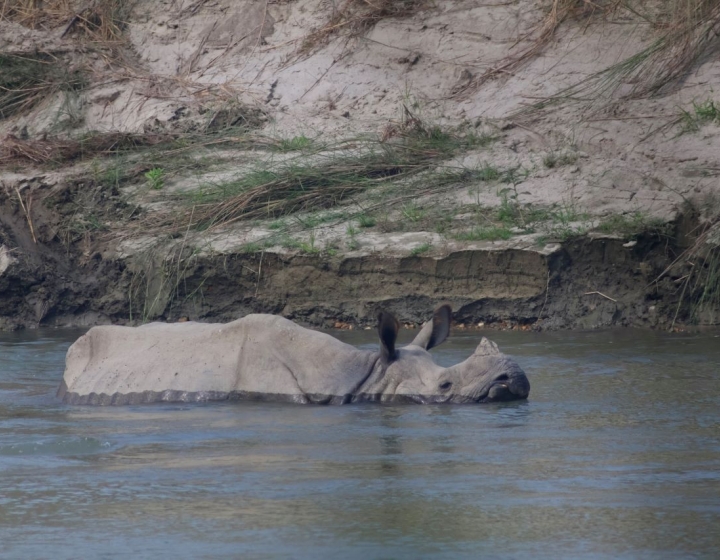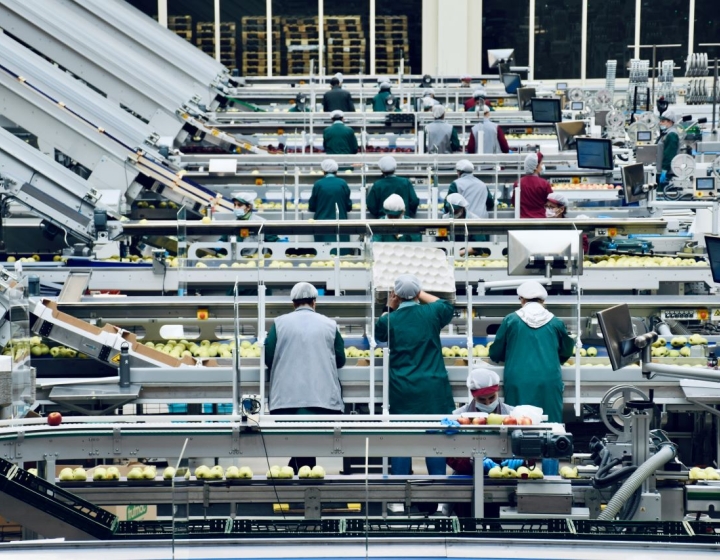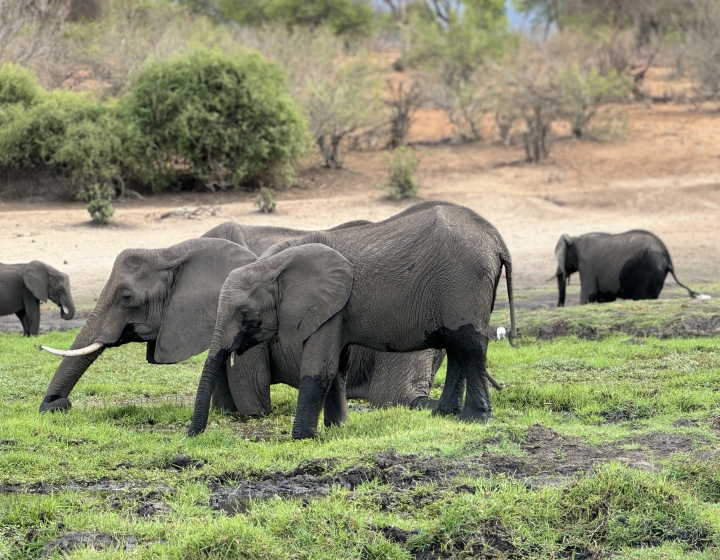Teamwork at Cornell Equine Hospital leads to a happy outcome for a mare and her foal

Chacco Astraeus, a Warmblood foal, had a rough start in life, but thanks to a seamless collaboration on the part of a team of specialists at Cornell Equine Hospital, Chacco is now a thriving three-month-old with a potential future as a show jumper.
Shortly after Chacco’s mother, Chacca Blue, went into labor, it became evident that things were not progressing normally and that both the foal and the mare were in danger. “The foal’s feet would emerge from the birth canal, and then they would disappear again,” says Sarah Paddock, the horses’ owner.
The veterinarian who was on-site at the barn, Erica Hutten ’99, D.V.M. ’03, herself a Cornell alumna, made the call to get Chacca to the Cornell Equine Hospital immediately. “One of the trainers at the barn walked Chacca right onto the trailer and drove her straight to Cornell,” Paddock says. “I mean, we didn't waste even a minute.”
When the mare arrived at the hospital, a team of faculty and residents was ready and waiting to handle the emergency.
“We needed to make things happen pretty quick,” says Dr. Callum Donnelly, assistant professor in the Section of Theriogenology, who was able to deliver the foal safely. “Often when we have a mare come in that is having a difficult birth, we have a really tight timeframe to deliver the foal alive. They call it the golden window, which is about 90 minutes. Longer than that is often incompatible with a successful outcome.”
In this case, that window of time had been used up during the drive from the barn in Bloomfield, NY, to the hospital in Ithaca, so it was a relief that both mare and foal survived.
“I was just sobbing with relief,” says Paddock. “It would have been devastating to lose the foal, and I am so in love with Chacca that the idea of losing her stopped me from breathing.”
Donnelly credits Hutten for recognizing very early on that this was a situation that required the specialist care available at Cornell.
Chacca Blue recovered from the birth without complications, and Chacco Astreaus was in stable condition, but it soon became clear that the foal was not able to swallow milk when he nursed, a condition called dysphagia. When the foal tried to nurse, there was a rattly sound in his throat and milk came out his nose. Additionally, instead of going down his esophagus and into his stomach, the milk went down his trachea to his lungs, causing aspiration pneumonia.
“This can happen for a lot of reasons,” says Dr. Barbara Delvescovo, a clinical instructor in large animal medicine and critical care. “Sometimes foals with difficult births or neonatal infections can be born with pharyngeal weaknesses and incoordination. In other cases, deficiencies are the culprit or sometimes it is a congenital problem, which it was in this case.”
To diagnose the problem, Chacco underwent a laryngeal endoscopy, where a camera is passed through the nostril to get an inside look at the larynx, as well as an ultrasound. Doctors discovered that there was a big cyst under his soft palate and epiglottis, called a subepiglottic cyst. “The anatomy of the area was very abnormal and mechanically he couldn't swallow properly,” says Delvescovo.
Delvescovo’s team started Chacco on medical therapy for the pneumonia and worked with Dr. Eileen Hackett, professor of large animal surgery, who performed the operation to remove the cyst.
“A video endoscope and specialized instruments were used to carefully remove the cyst, which will give Chacco Blue the best chance at normal throat function,” Hackett says.
While the procedure can be challenging for a young horse already recovering from a traumatic birth and aspiration pneumonia, thanks to Cornell’s expert care team, including top anesthesiologists and surgeons, Chacco came through it well. For a couple of days after the surgery, he had to be fed through a tube since he couldn't nurse because he had swelling around the roof of his mouth. Once the swelling went down with medical treatment and time, the doctors placed him under the mare, and he was able to nurse with no problem.
“It happens very often that we have complicated cases on which multiple services and clinicians collaborate,” says Delvescovo. Indeed, the theriogenology, medicine, surgery and other teams provided care throughout and kept the owner and referring veterinarian informed. “A huge part of our work is being able to communicate effectively and work together closely for the best interest of the patient.”
Paddock reports that Chacco is doing well and is a super-friendly little foal. “He’s the world’s largest golden retriever,” she says. She says she is beyond grateful to the team at the Cornell Equine Hospital, who had also performed orthopedic surgery, splint bone removal, on Chacca, the foal’s mom, a few years ago when she was still jumping. “They're top of their game, top of the industry. They saved her life. They saved his life. They’re the best.”
Written by Christina Frank





